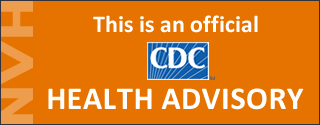CDC Disaster Epidemiology Resources for Hurricane Sandy Response
Distributed via the CDC Health Alert Network
November 1, 2012, 18:35 ET (6:35 PM ET)
CDCHAN-00334-2012-11-01-ADV-N
Background
Hurricane Sandy made landfall as a post-tropical cyclone along the coast of southern New Jersey on Monday, October 29. In the wake of this landfall, natural hazards associated with the storm, such as high winds, heavy rains, dangerous storm surge and flash flooding, and snow and cold weather, continue to affect many areas.
During a disaster, public health and emergency management professionals must be prepared to respond to and meet the needs of the affected public in a timely manner. Gathering health and basic needs information using valid statistical methods allows public health and emergency managers to prioritize their responses and to make informed decisions regarding the distribution of resources.
CDC’s Community Assessment for Public Health Emergency Response (CASPER) Toolkit
Public health practitioners and emergency management officials can use CDC’s rapid needs assessment toolkit, the Community Assessment for Public Health Emergency Response (CASPER), to determine the health status and basic needs of the affected community quickly. The toolkit can assist personnel from local, state, regional, and federal public health departments in conducting the CASPER during a disaster. The CASPER toolkit provides guidelines on data collection tool development, methodology, sample selection, training, data collection, analysis, and report writing.
CDC’s CASPER toolkit is available online at www.cdc.gov/nceh/hsb/disaster/casper.htm. If you need assistance with conducting a CASPER, please contact the CDC EOC at 770-488-7100.
CDC Assistance in Disaster Epidemiology
CDC provides consultation and technical assistance during a disaster response. Please contact the CDC EOC for assistance at 770-488-7100.
CDC’s Surveillance Tools
CDC has developed mortality and morbidity surveillance forms that can be used in health care facilities and shelters. The tools are available online at www.cdc.gov/nceh/hsb/disaster/epidemiology.htm.
For information about flood recovery, power outages, carbon monoxide poisoning, food and water safety, rodent control after a disaster, winter weather emergency preparedness, animals and insects, and related topics, please visit CDC’s Natural Disasters & Severe Weather site: http://emergency.cdc.gov/disasters.
Additional Resources
- CDC Disaster Epidemiology Resources — www.cdc.gov/nceh/hsb/disaster/epidemiology.htm
- ATSDR’s Rapid Response Registry information available at www.atsdr.cdc.gov/rapidresponse
The Agency for Toxic Substances and Disease Registry’s (ATSDR) Rapid Response Registry (RRR) helps local, state, and federal public health and disaster response agencies rapidly establish registries of persons who are exposed or potentially exposed to chemicals or other harmful agents during catastrophic events.
The Centers for Disease Control and Prevention (CDC) protects people’s health and safety by preventing and controlling diseases and injuries; enhances health decisions by providing credible information on critical health issues; and promotes healthy living through strong partnerships with local, national and international organizations.
Department of Health and Human Services
HAN Message Types
- Health Alert: Conveys the highest level of importance about a public health incident.
- Health Advisory: Provides important information about a public health incident.
- Health Update: Provides updated information about a public health incident.
###
This message was distributed to state and local health officers, state and local epidemiologists, state and local laboratory directors, public information officers, HAN coordinators, and clinician organizations.
###

